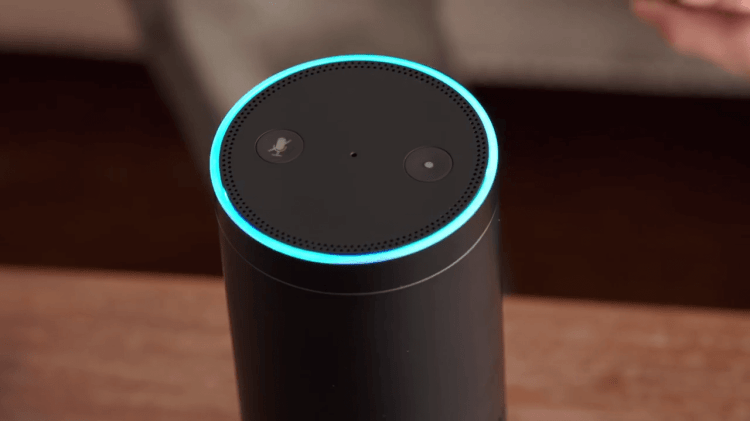2016 saw an incredible rise in connected home devices, specifically Amazon Echo (8 million devices sold) and Google Home devices. Prior to that, Siri made adding an event to your calendar or quickly looking up the weather as easy as a simple push of a button on your smart phone.
At what point does “Siri, tell me the weather” or “Alexa, play music” become “I’ll have a cheeseburger and fries” or “What aisle can I find the peanut butter on?” or “Does this shirt come in small”?
As we move away from assistants who perform simple automated tasks, 2017 has the potential to turn voice assistant technology into a virtual customer service functionality. The convergence of chatbots and virtual voice assistants has the potential to completely change the retail experience.
For years, we have heard rumors about quick service retail (or QSR) replacing humans with touch screen tablets. Instead, Alexa may be the one to finally deliver the fatal blow. I have little doubt that an Alexa-enabled skill could be developed in a matter of weeks that replicated most of what a QSR counter person is able to do. This is not a knock against those employees but rather praise for the advancements that have been made over the past year.
June 5th: The AI Audit in NYC
Join us next week in NYC to engage with top executive leaders, delving into strategies for auditing AI models to ensure fairness, optimal performance, and ethical compliance across diverse organizations. Secure your attendance for this exclusive invite-only event.
In late 2015, we made an investment in a company called Msg.ai that was one of the first to develop a bot for the Facebook Messenger platform. At the time, the term “chatbot” had yet to be established. They pitched it as “Artificial Intelligence for Conversational Commerce,” which doesn’t have the same ring. However, over the past year, we have seen hundreds of companies emerge in the space and millions in investment capital poured into further developing the technology.
To me, it is one of the most exciting spaces to watch, not only for the incredible advancements in machine learning and NLP, but because of the incredible amount of insights that we are able to extract. These voice-enabled retail bots will log an amazing amount of data about customer preferences. Does Starbucks know what percentage of its customers prefer coconut milk? Does McDonald’s know what percentage of its customers ask for no pickles? Does Dunkin’ Donuts know how many times it is able to successfully upsell me on two donuts instead of just one?
For many companies, human interaction is too important to switch to bots. However, as Alexa becomes a part of every home and chatbots increasingly replace traditional customer service, at what point will actual human interaction be perceived as less efficient than the virtual interaction with chatbots or voice-activated platforms?
“Omni-channel” has been a buzzword in retail for a number of years. It is something everyone says they are doing but no one knows how to implement. What many companies struggle with is standardizing the experience. A web experience, no matter how hard we try, is nothing like a physical shopping experience. Mobile is closer, since I can use mobile as part of the physical experience via mobile payments or apps. Starbucks has come the closest in this respect with its mobile app and it recently released a chatbot — yet it still requires a human to take your order when you’re in the physical location.
However, voice may provide the standard experience omni-channel has been looking for. I can talk to a virtual clerk in store, on my phone, via a voice-activated platform like Alexa, or through a chatbot within Messenger or within the company’s own app. This conversation could be carried across all channels, customizing my experience as I go.
Imagine a scenario where I wake up in the morning and Alexa reminds me of a sale going on, or even better, that I have unused rewards points at Starbucks.
“Good morning Kyle, you have a Star Reward from Starbucks, would you like me to order your usual?”
“Thanks Alexa, that would be great.”
“Perfect, I will place the order when you are 5 minutes from the destination.”
Using the location services from my Starbucks mobile app, Starbucks would know when I am approaching, place my order, and remind me of my order via push notification — or even better, through voice.
As I pull up to the drive-through, I repeat:
“Hi, this is Kyle to pick up my order.”
“Hi Kyle, please pull forward, your order is ready.”
This simple scenario is truly omni-channel and would save me, as a consumer, valuable time. As a retailer, it would build loyalty and provide insights into customers’ everyday behavior.
In the coming year, I expect a few high-profile QSRs to test the use of voice assistants in the ordering process, and I predict that as retailers build out chatbot functionality they are simultaneously building voice-enabled “skills” that can exist within their home or within the physical retail environment.
Kyle Fugere is a principal at Dunnhumby Venture, a corporate seed fund.


